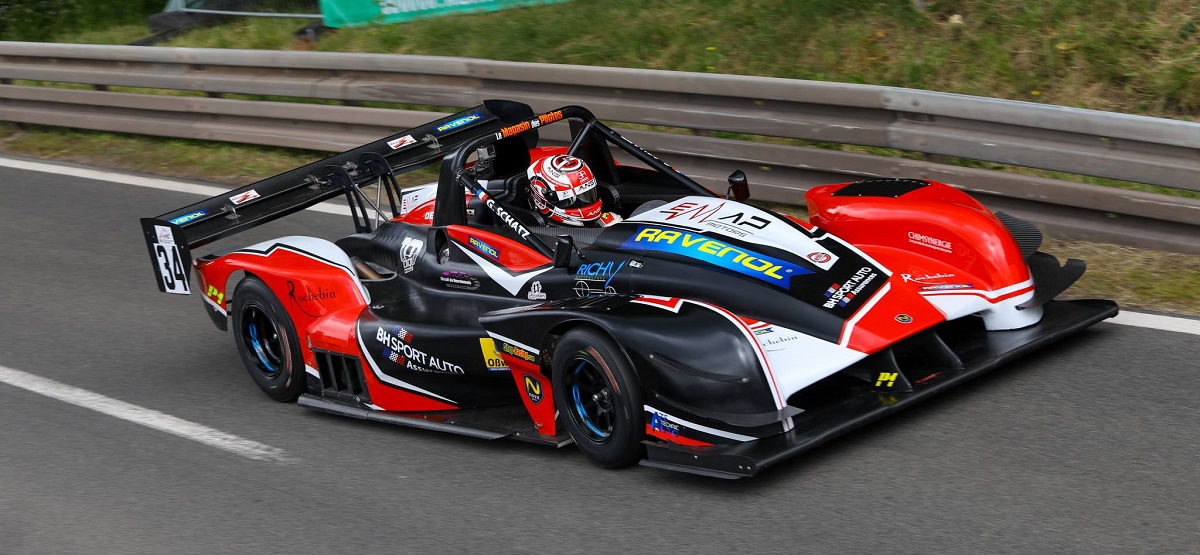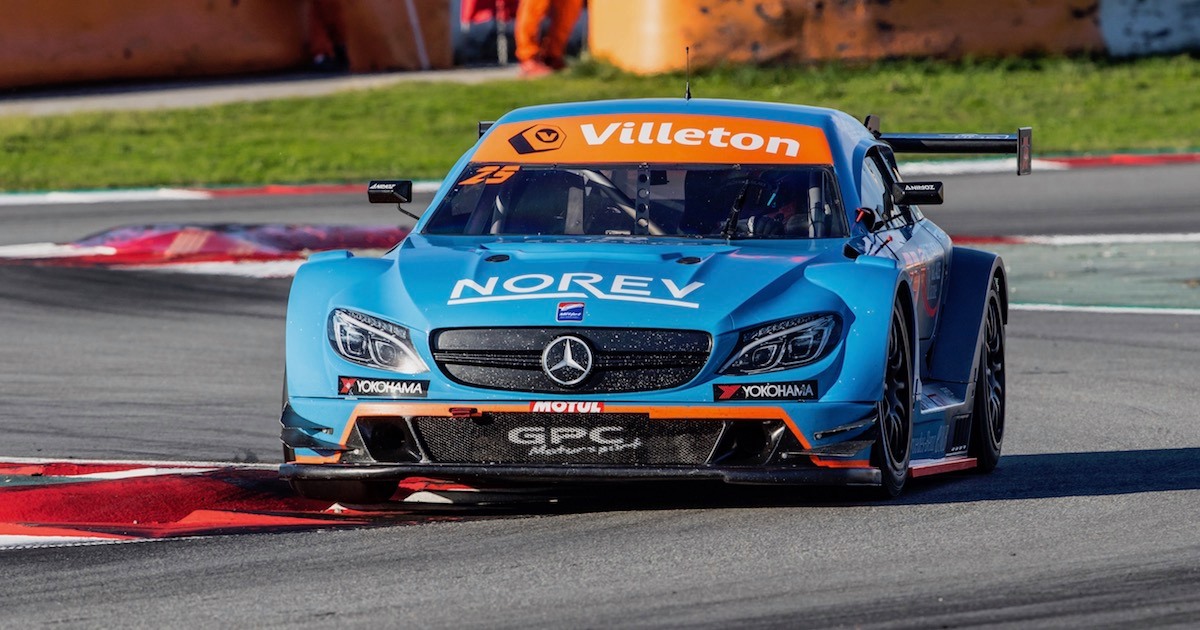Slalom: Compete in Your Everyday Car
By RobinB on 20 May 2025 Hillclimbing & SlalomAre you passionate about motorsport and dream of taking the wheel in competition, but think it necessarily requires a big budget or a fully prepared race car? Think again! 🥰
Auto slalom, especially in its Recreational category, is a particularly accessible discipline to get started in motorsport. This event focuses on driver skill rather than vehicle power, and even allows you to compete with your everyday car.
In this article, I invite you to discover what a slalom is, the specifics of the Recreational category, the requirements to participate, and the many advantages of this friendly and affordable discipline 🥳
What is auto slalom?
Auto slalom is a time attack event held on a closed road course, usually marked out with cones or stakes, where skill takes precedence over raw speed. Practically speaking, each competitor drives a short course (between 800 meters minimum and 2,000 meters maximum) filled with tight turns, hairpins, and chicanes, as fast as possible. The start is from a standstill, and the clock runs until the finish ⏱️
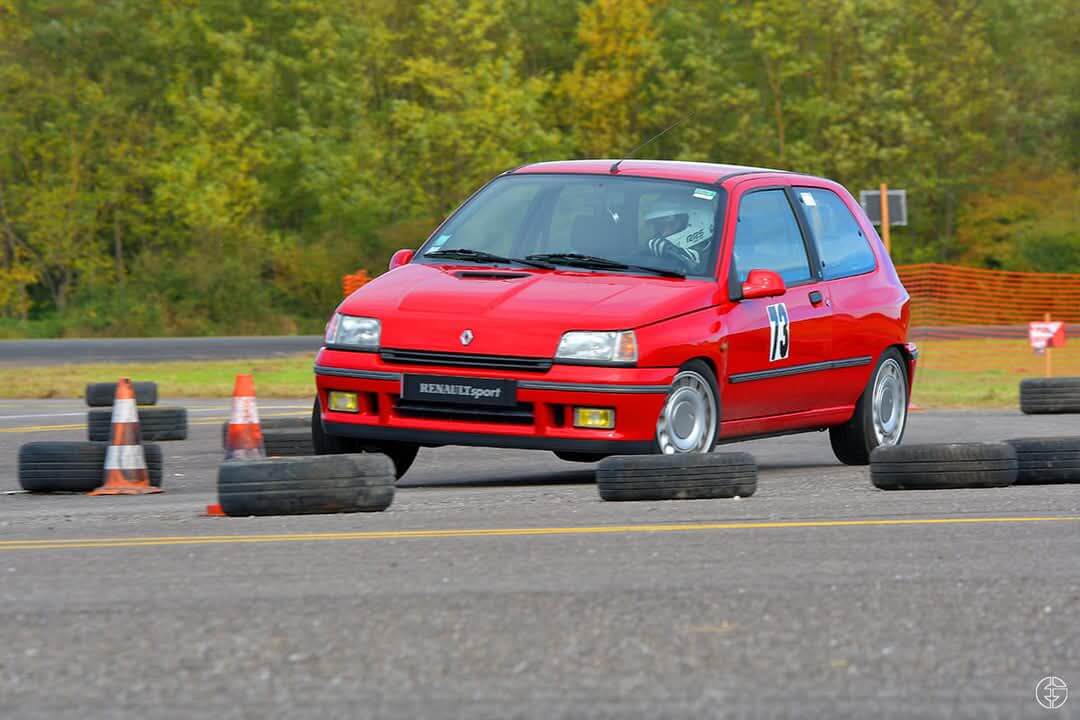
The track requires frequent direction changes: “natural” corners or penalty cones are placed roughly every 80 to 90 meters to prevent long straight-line accelerations. Touching or knocking over one of these obstacles results in a time penalty added to your final time (usually between 1 and 2 seconds per cone hit). So, it’s best to aim for clean and precise driving! In case of a more serious mistake (missed chicane, wrong route), the run can even be disqualified for the driver ❌
ℹ️ A slalom typically consists of several runs: usually 1 to 2 practice runs (to get familiar with the course) followed by 3 or 4 timed runs. Only the best timed run counts for the final ranking
Competitors set off one at a time at regular intervals, ensuring maximum safety. Spectators are placed in secured areas along the course but are usually free to access the competitors' paddock to get close to the cars and chat with the drivers. The atmosphere is generally relaxed and welcoming, with a wide variety of vehicles present: single-seaters, prototypes, rally cars, historic cars… and even road-going cars in the Recreational category! 👍
➡️ See all road car listings on GoToTheGrid.
The Recreational category in slalom: race with your road car
The “Recreational” category is a group specific to slaloms, offering an ideal entry point for beginners. It’s the only motorsport discipline in France that allows strictly stock cars in timed competition. Unlike hillclimbs or rallies where the cars are prepared, Recreational slalom allows you to line up on the grid with a standard road car, without modifications—or almost.
Also see: "Beginning and improving hillclimbing"
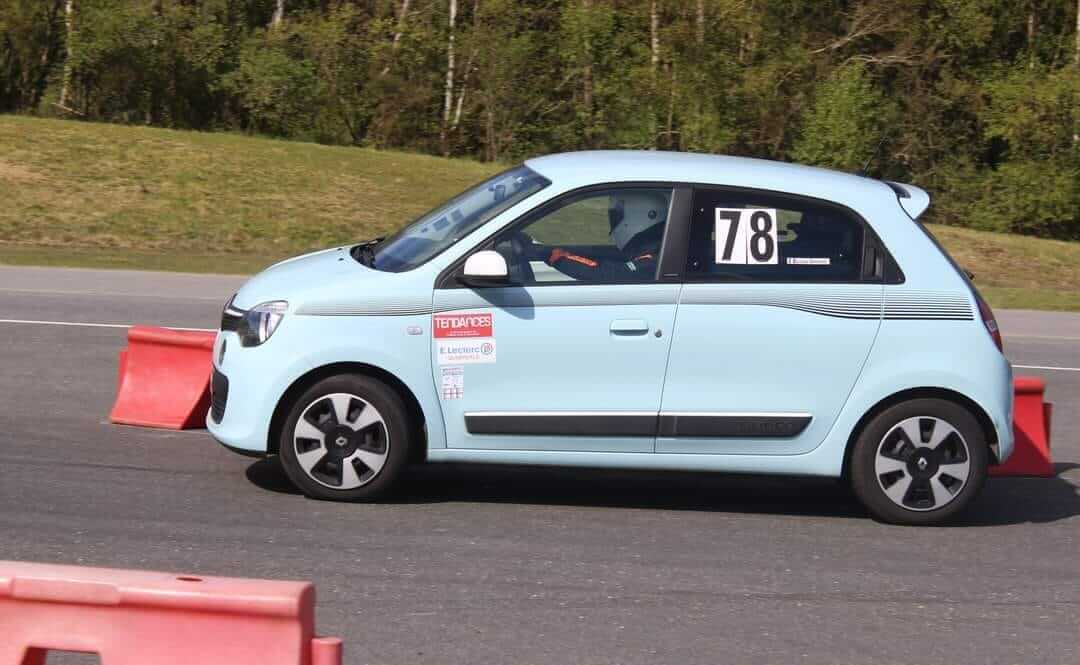
Here are the main features of the Recreational group:
Accessibility and minimum age
You can race in the Recreational category from age 16, with parental authorization for minors. From the age of 19, a valid driver’s license (category B) becomes mandatory to continue competing. This category is therefore an excellent stepping stone for young people wanting to explore motorsport.
Strictly stock vehicles
⚠️ The Recreational group regulations require the use of a strictly stock vehicle, meaning one that is fully compliant with the original factory model ⚠️
No mechanical modifications are allowed, nor any chassis or safety equipment alterations — unlike other slalom categories that feature modified competition cars, here your vehicle must remain exactly as the manufacturer designed it. Light cosmetic tuning (wheels, livery, etc.) is tolerated only if it does not affect safety or the original mechanical performance. In short, no adding horsepower or reducing weight: the game is to make the most of your everyday car’s abilities 👌
Registered and road-legal car
Your car must be registered, insured, and have a valid roadworthiness certificate (technical inspection), in full compliance with the Highway Code. The registration document, proof of insurance, and valid inspection certificate will be checked during administrative scrutineering before the race. You’ll also be asked to present a complete vehicle (for example, no removed seats) that matches the original manufacturer’s specs. All original comfort and safety equipment must be present and functional. Please note that soft-top convertibles are prohibited for safety reasons; only cabriolets equipped with a hardtop are allowed in the Recreational category.
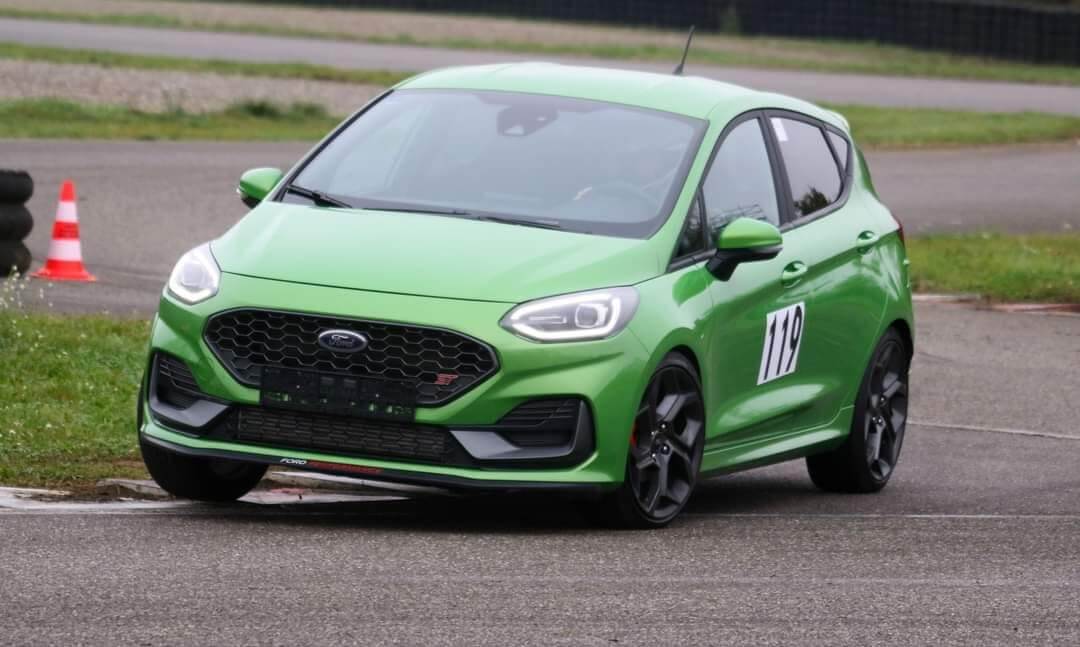
Mandatory safety features
Even though it’s a stock car, it must meet certain minimum safety requirements (which most road cars already fulfill): three-point seat belts for the front seats, laminated glass windshield, dual-circuit braking system, and exterior mirrors on both sides are mandatory. These features are generally standard on modern vehicles; just make sure they’re in good condition. Additionally, the tires used must be road-legal (E or DOT certified) — your everyday tires are perfectly acceptable. “Semi-slick” tires with a motorsport orientation (e.g. Toyo R888R) are allowed only if they are road-legal (the label “competition only” is prohibited).
In addition to the vehicle, organizers often require each competitor to have a portable fire extinguisher on board or within immediate reach of the vehicle, as well as a ground tarp to place under the car in the paddock. The extinguisher allows for quick response in case of fire, and the tarp helps prevent pollution in case of fluid leaks (oil, fuel) on the ground.
ℹ️ Failing to comply with these requirements can result in financial penalties from race marshals (some slaloms impose a €150 to €200 fine if you don’t have a fire extinguisher or if you soil the paddock area). It’s best to invest in a small 2kg extinguisher and a plastic ground tarp before you show up 😉
Required driving attire
No need for a fireproof racing suit to start in the Recreational category, but a minimum outfit is required. You must wear a certified helmet (European auto or motorcycle standards) and clothing that covers the entire body.
In practical terms, this means long sleeves, long pants, and closed non-flammable shoes (synthetic materials like nylon or acrylic are prohibited — cotton is a better choice, for example). These rules are intended to protect you in case of an incident (fire or debris). A pair of gloves is also recommended, even if not mandatory in the Recreational category. Of course, you must be physically fit for sporty driving — a medical certificate will anyway be required to obtain your license (more on that later).
Ranking and categories in Recreational Slalom
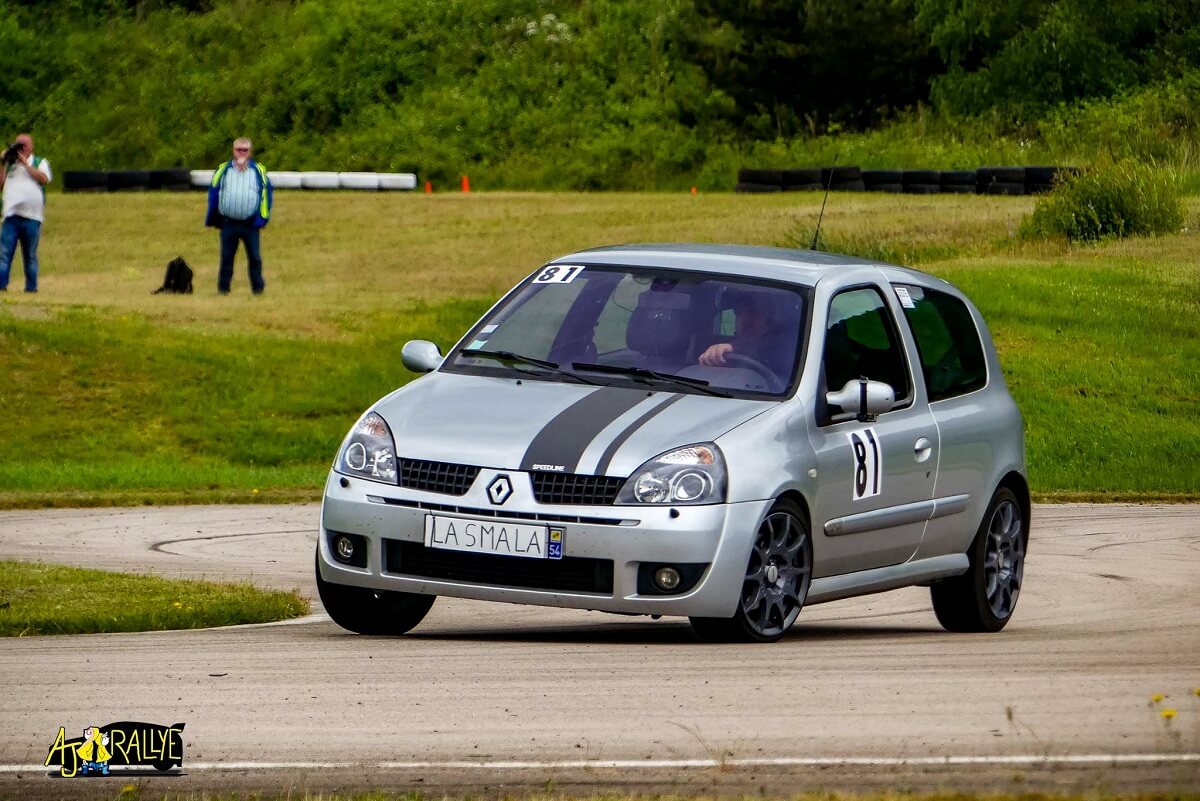
Competitors entered in the Recreational group only compete among themselves, in a separate ranking from other competition car categories. They do not appear in the event’s overall standings and do not earn points for the French Slalom Cup (meaning they cannot qualify for the national final). This is a deliberate choice by the FFSA to preserve the amateur and fun nature of this category.
Within the Recreational group, there are three vehicle subclasses:
Class L1
Naturally aspirated petrol engines up to 1400 cc, naturally aspirated diesel engines up to 2000 cc, or turbo diesel engines up to 1600 cc.
Class L2
Petrol engines (naturally aspirated or turbocharged), and turbo diesel engines, up to 2000 cc.
Class LE
Vehicles powered by new energy sources (electric, potentially hybrids) approved in France and without any modifications. This class occasionally allows a stock electric car to take part, showing that slalom is adapting to the times.
These L1, L2, and LE classes allow fairer performance comparisons between vehicles with similar engines and dimensions, ensuring more balanced duels between competitors. Unlike other categories, no coefficient is applied based on engine type: only actual displacement is taken into account, whether the engine is naturally aspirated or turbocharged. In short, any stock car that complies with the rules, is operational, and meets the technical requirements can find its place in Recreational slalom — whether petrol, diesel, or electric.
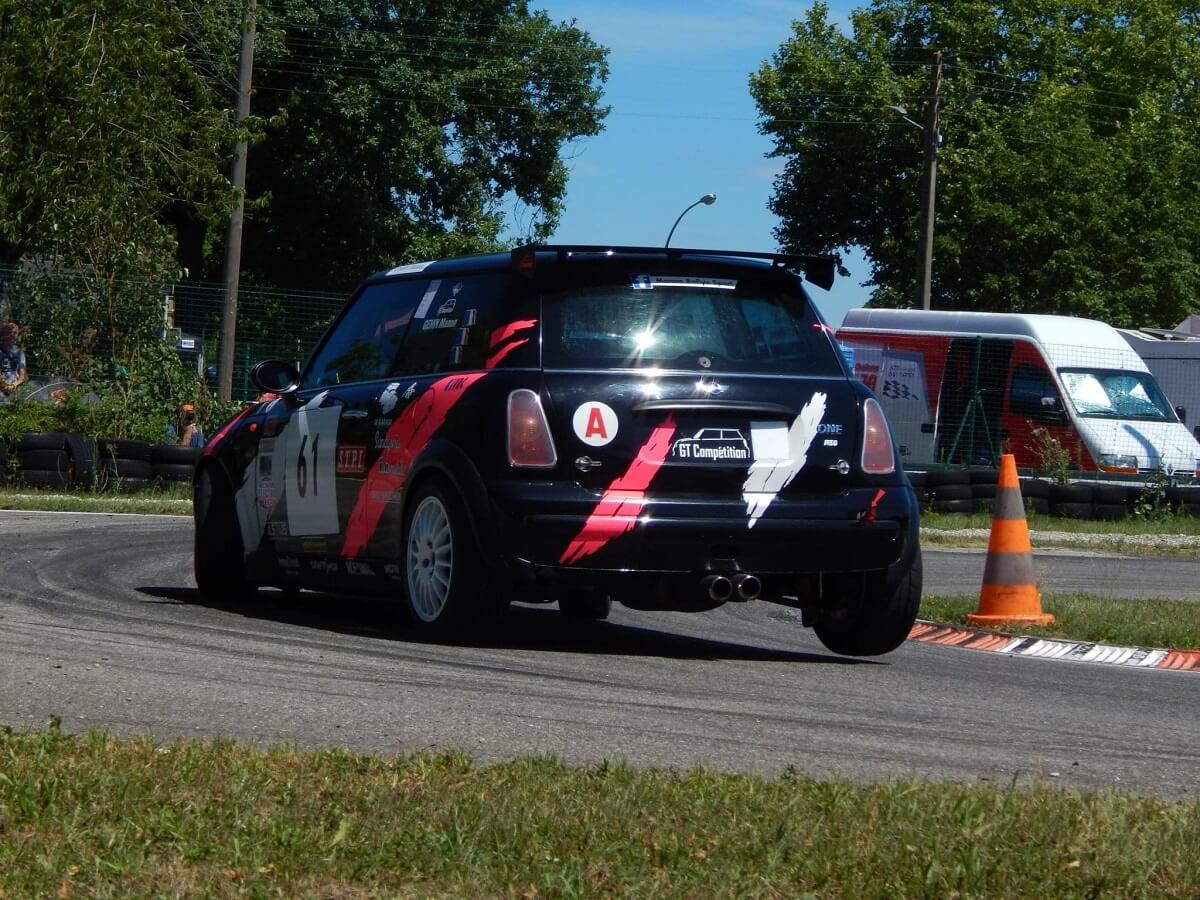
ℹ️ Note that until 2024, only turbocharged petrol engines up to 1600 cc were allowed in Class L2. But since 2025, the FFSA has expanded the rules to also allow turbocharged petrol engines up to 2000 cc 🔥
This change has ruffled some feathers in the paddock, as it opens the door to very high-performance cars such as the Mégane RS, Toyota GR Yaris, Honda Civic Type R, or even certain Alpine A110s, capable of producing nearly 300 horsepower in stock form. Until now, cars like the Secma F16 (see below) or Caterham were seen as the ultimate weapons in the Recreational group.
Also see: "Caterham Academy: the motorsport series for beginners"
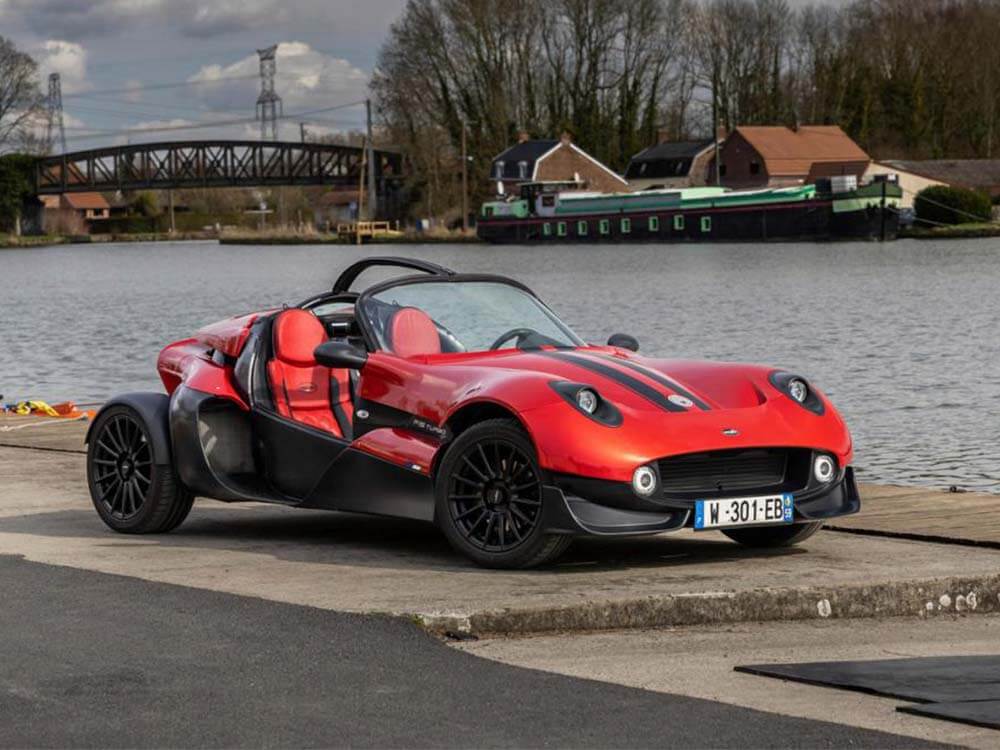
This new rule naturally raises questions about fairness when compared to more modest vehicles. But in slalom, lightness, agility, and driver precision remain key. A powerful but heavy car can easily be beaten by a well-driven city car.
Indeed, raw power is not enough on a narrow and twisty course where every tenth is won through positioning and anticipation 😋
How to participate in a Recreational slalom? (Registration, license, and budget)
Now that you’ve seen the principles and technical framework, let’s get into the practical side: how to register and how much it costs to participate in a Recreational slalom. Good news — the process is relatively simple ☺️
Race entry
Each event is organized by an ASA (Association Sportive Automobile) affiliated with the FFSA. You need to register in advance by sending an entry form (usually available online or on the organizer’s website) and paying the entry fee. For a regional slalom, expect to pay on average around €80 to €100 in entry fees per driver. This amount covers event organization, insurance, etc.
ℹ️ In the Recreational category, entry fees are the same as for other competitors (no discounted rate).
License or participation pass
To take the start, you’ll need a valid FFSA competition license on the day of the event. Fortunately, it’s not mandatory to subscribe to an expensive annual license when you’re just starting out or just want to try: the FFSA offers “participation passes” valid for one day. What we commonly call a day license is actually a specific participation title for a single event.
For slalom, this regional participation pass costs around €57 (including €47 for the FFSA and about €10 for the organizing ASA). It is often listed under the code TPRS (Titre de Participation Régional Slalom). You can get it directly during administrative checks before the race by filling out a form on site. You’ll need to present an ID and, most importantly, provide a medical certificate dated within the last six months stating that you have “no contraindication to participating in motorsport competition.” This certificate can be issued by your GP on plain paper or using the official FFSA form.
Once these formalities are completed and the fee paid, your participation pass (or your license, if you chose an annual one) will be issued. Note that a regional annual Driver Competitor License for slalom costs approximately €160, which is only worth it if you plan to race several times in the season. For beginners, the one-time participation pass is the easiest and most economical option 🤗
Sharing a car between two drivers (double entry)
The rules allow the same car to be used by a maximum of two competitors in the same event. This is called “double entry.”
In practice, if you have a friend who also wants to try slalom, you can both enter with the same car, taking turns. Each driver must pay their own entry fee and have their own license (or participation pass), but you’ll share all car-related expenses (tires, fuel, etc.), reducing the overall budget. It’s also a great way to make the most of a single car if you only have one available for racing.
In double entry, organizers simply adjust the running order so that the two drivers don’t interfere with each other (typically by inserting a few cars between the two runs to give time for a driver switch). This friendly format allows you to split some costs and enjoy the experience together 😎
On race day, once registered, you’ll need to present the car and your equipment for technical and administrative checks. The car’s registration, insurance, and inspection will be reviewed, as well as compliance with regulations (category, displacement, safety features, etc.). Don’t worry — in the Recreational category it’s all quite simple since your car is stock: just check that it’s in good general condition (tires, no leaks, secured battery, etc.) and that you have your helmet, appropriate clothing, fire extinguisher, and ground tarp 👌
Once checks are passed, you’ll be assigned a race number to stick on your doors, and you’ll be ready to take part in practice runs. Don’t hesitate to talk with organizers and other drivers in the paddock — the atmosphere is usually welcoming, and newcomers are warmly received.
Staying in the Recreational spirit: rules and occasional tolerances
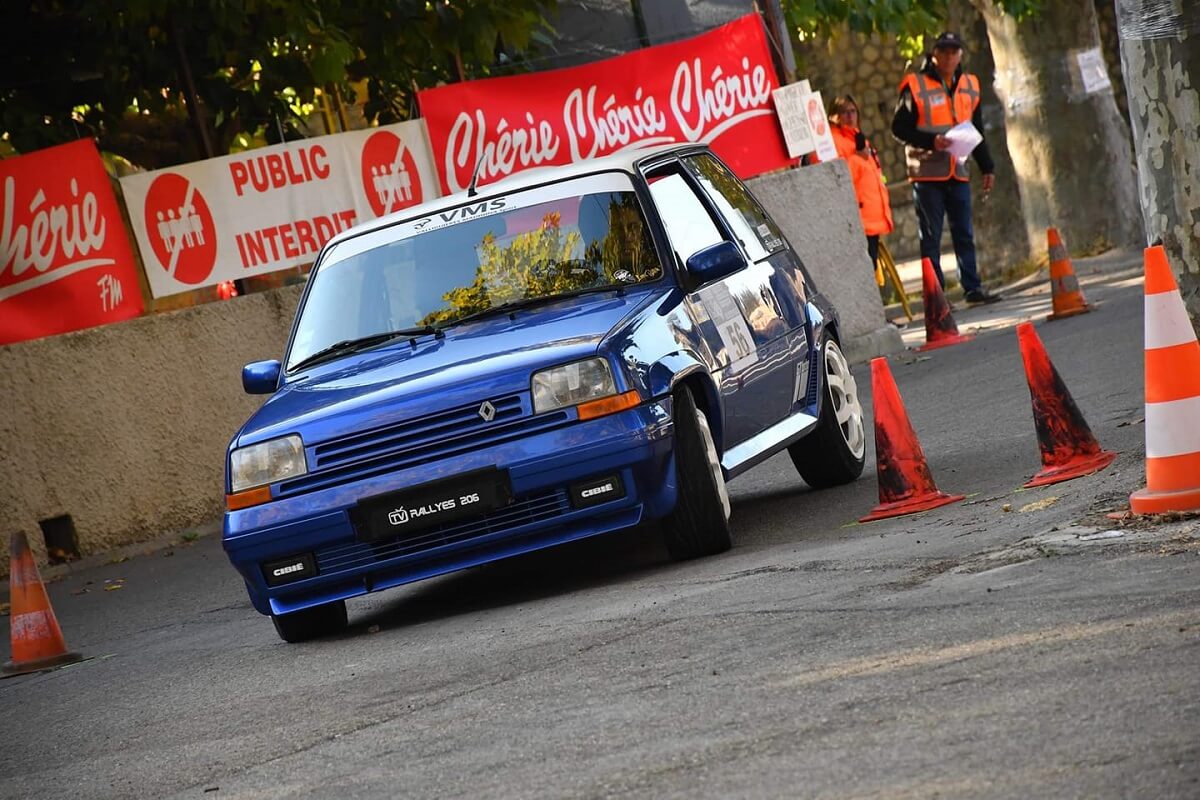
As we’ve seen, the technical rules for the Recreational group emphasize maintaining the vehicle’s original factory configuration. In practice, some participants may apply very minor modifications, betting on the technical inspectors’ leniency.
For example, it’s not unheard of to see Recreational cars fitted with a sport exhaust or a performance air filter to slightly improve engine breathing. Officially, such modifications are not allowed (as they affect the mechanics or sound of the vehicle). However, as long as they don’t provide a significant performance gain and safety is not compromised, it’s true that some inspectors may turn a blind eye, keeping in mind the category’s relaxed spirit.
⚠️ But be careful: it’s at your own risk!
If you show up with non-compliant parts and the inspector is strict (or if another competitor complains), you may be reclassified out of the Recreational group or even refused at the start. The best advice is to bring a car as close to stock as possible. Likewise, don’t bother trying to lighten the interior by removing seats or trim: not only is it prohibited, but you’d also lose the charm of saying you’re racing with your daily driver. The beauty of the Recreational category is precisely that it feels like you’re driving “straight out of the garage” 😉
The advantages of Recreational Slalom: excitement, low costs, and friendly atmosphere
The Recreational category is a hit with enthusiasts because it offers many benefits for anyone wanting to enjoy motorsport without breaking the bank.
A low-cost discipline
In slalom, timed runs are short (often around one minute each) and the number of runs is limited. Total driving time is low, which greatly reduces car wear. Tires, brakes, clutch, engine… everything is spared compared to track days or rallies covering tens of kilometers 🥵
You can easily compete in a few slaloms per year with a city car without noticing any significant wear, apart from regular oil changes and maybe a new set of tires every few events.
What’s more, there’s no need for heavy investment: a €30 extinguisher, a €20 tarp, maybe a set of sportier tires (which can also be used on the road), and you’re ready. The modest entry fee (~€100) and day license (~€57) keep event costs in check.
By opting for a double entry, you can also share expenses (fuel, tolls, hotel if traveling, etc.) with your teammate. All in all, Recreational Slalom offers one of the best thrill-to-cost ratios in motorsport 🎉
Strong driving sensations
Don’t be fooled by the short course or the relatively low speeds in slalom (rarely over 100 km/h): the challenge of placing your car perfectly between cones, braking at the last meter, and chaining tight corners gives an incredible adrenaline rush 😱
Every tenth of a second gained is earned through steering precision and brake control. It’s a real driving school: slalom teaches you to understand your car’s reactions, find the best lines in tight spaces, and sharpen your reflexes. All this in complete safety, on a closed course and under the watchful eye of marshals. Many rally and circuit drivers started out in slalom to build experience. And for enthusiasts, it’s the perfect chance to push your car to its limits — something rare (and not recommended) on public roads — legally. Thrills are guaranteed with every run, and pushing your limits is often necessary to improve your time 🔥
A friendly atmosphere and flexible format
Slalom events are generally held over a single day (occasionally two, but rarely), so there’s no need to block off an entire weekend. You show up in the morning, and leave in the evening with great memories 🤩
In the paddock, the vibe is relaxed, drivers freely share tips, and experienced competitors are happy to guide newcomers during course walks or tire pressure setup.
The fact that everyone comes with their own road car creates a sense of closeness: people admire a sharp little Peugeot 106 or Renault Clio, and friendly comparisons are made — far from the sometimes elitist image of motorsport. The public loves it too, enjoying access to the paddock to get up close to the cars.
In the Recreational category, it’s not uncommon for every participant to go home with a trophy or memento after the race — a way to reward commitment and encourage new drivers. Finally, succeeding in your first Recreational slalom often makes you want to go further: you can aim for higher categories (groups N, A, F2000, etc.) the following year once you feel ready to take on prepared cars. Recreational slalom is a great training ground — but also a goal in itself for regular, low-pressure driving.
➡️ See all slalom car listings on GoToTheGrid.
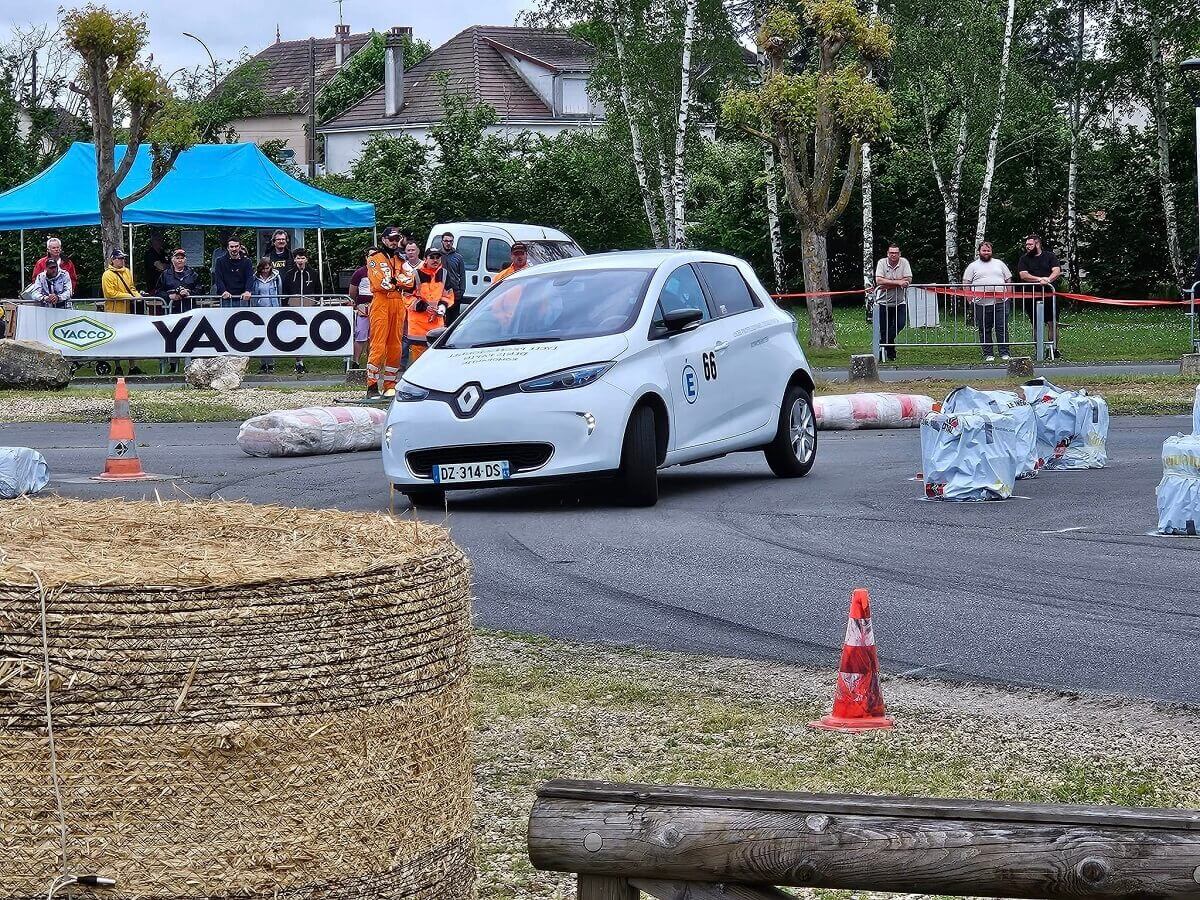
So, ready to get started?
In short, Recreational slalom is one of the simplest and most affordable disciplines to start in motorsport.
With a stock road car in good condition, some basic safety equipment, and plenty of enthusiasm, you can taste competition in a safe and friendly environment. This “recreational” format allows anyone to enjoy driving, improve, and share their passion with other drivers — all without going broke. If you dream of being a racing driver for a day, don’t wait: find the next slalom event near you, sign up, and give it a try. Who knows? It might be the start of a long journey in motorsport! 🙂
To learn more, feel free to check out the FFSA 2025 Slalom Technical Regulations for all official details on the Recreational category, as well as the FFSA license portal to explore license and participation pass options. All that’s left is to wish you good luck and lots of fun on the slalom course — hope to see you soon on the start line, helmet on and smile on your face 👍



